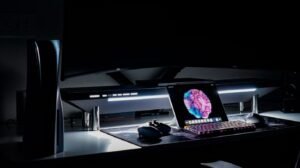Applications of PCR
PCR (Polymerase Chain Reaction) is a powerful tool in molecular biology that allows for the amplification and detection of specific DNA sequences. Since its development in the 1980s, PCR has revolutionized various fields of research and diagnostics. This article discusses some of the key applications of PCR and how it has contributed to advancements in different domains.
Key Takeaways:
- PCR is used in various fields including research, medicine, forensics, and agriculture.
- The technique allows for the amplification and detection of specific DNA sequences.
- Applications of PCR range from diagnostics and disease detection to genetic engineering and evolutionary studies.
1. Diagnostics and Disease Detection: PCR plays a vital role in the diagnosis of infectious diseases, genetic disorders, and cancers. It allows for the detection of pathogens, identification of genetic mutations, and monitoring of diseases through quantitative PCR.
2. Genetic Engineering: PCR is an essential technique in genetic engineering as it enables the amplification of specific DNA sequences that can be further manipulated. It is used in gene cloning, site-directed mutagenesis, and recombinant DNA technology.
3. Forensics: PCR has revolutionized forensic science by enabling DNA profiling and identification. Through PCR-based techniques like short tandem repeat (STR) analysis, DNA evidence can be used to solve crimes, identify individuals, and establish relationships.
4. Evolutionary Studies: PCR has allowed researchers to study and understand evolutionary relationships by amplifying and analyzing DNA sequences across species. It has contributed to fields such as phylogenetics, population genetics, and evolutionary biology.
PCR has become a fundamental technique in molecular biology, enabling advancements in various fields thanks to its versatility and sensitivity.
PCR Applications in Medicine:
PCR has significantly impacted medical research and diagnostics. Here are some key applications of PCR in medicine:
| Application | Description |
|---|---|
| Pathogen Detection | PCR allows for the rapid and accurate detection of pathogens, such as bacteria or viruses, aiding in the diagnosis and treatment of infections. |
| Genetic Testing | PCR-based tests are used to identify genetic mutations and determine a person’s risk for inherited disorders. |
| Cancer Detection | PCR enables the detection of cancer-related genetic mutations and the monitoring of minimal residual disease, helping with early diagnosis and treatment monitoring. |
PCR Applications in Agriculture:
PCR has also found applications in agriculture and biotechnology. Here are some significant uses of PCR in these domains:
- Plant Disease Diagnosis: PCR-based techniques are used to identify pathogens affecting crops, aiding in disease management and preventing yield losses.
- Genetically Modified Organism (GMO) Testing: PCR is employed to detect and quantify GMOs in food products, ensuring compliance with labeling regulations.
- Foodborne Pathogen Detection: PCR-based methods are used to detect bacteria such as Salmonella and E. coli in food samples, contributing to food safety and preventing outbreaks.
PCR Applications in Forensic Science:
PCR has revolutionized forensic analysis. Here are some key applications of PCR in forensics:
| Application | Description |
|---|---|
| Forensic DNA Profiling | PCR-based methods allow for DNA profiling, comparing crime scene samples with those of suspects or victims. |
| Relationship Testing | PCR is used to determine familial relationships in cases such as missing persons, paternity disputes, and immigration. |
| Body Fluid Identification | PCR allows scientists to identify specific body fluids (e.g., blood, saliva, semen) at crime scenes, aiding in forensic analysis. |
PCR’s application across diverse fields continues to grow, contributing to advancements in research, diagnostics, forensics, and agriculture.

Common Misconceptions
Misconception: PCR is only used in medical diagnostics
One common misconception about the applications of PCR is that it is solely used in the field of medical diagnostics. While it is true that PCR is extensively used in healthcare settings for diagnosing various diseases and genetic disorders, its applications extend far beyond that.
- PCR is widely used in environmental research to detect and study microorganisms in different ecosystems.
- PCR is crucial in forensic science for DNA profiling and identification of suspects in criminal investigations.
- PCR is used in food testing to detect contaminants or allergens, ensuring food safety and quality control.
Misconception: PCR can only amplify DNA
Another common misconception is that PCR can only amplify DNA. While it is true that PCR is primarily used to amplify specific DNA sequences, modern variations of PCR have enabled amplification of other nucleic acids as well as RNA.
- Reverse transcription PCR (RT-PCR) allows the amplification of RNA molecules, making it useful in gene expression studies and viral load quantification.
- Nested PCR and multiplex PCR techniques can be used to amplify multiple DNA or RNA targets simultaneously.
- Quantitative PCR (qPCR) enables the quantification of nucleic acids, providing information about gene expression levels or viral loads.
Misconception: PCR results are always 100% accurate
Although PCR is a highly reliable technique, it is essential to understand that PCR results are not always 100% accurate. There are several factors that can introduce errors or uncertainties in PCR results.
- Contamination during the PCR process may lead to false positive results, especially if proper controls are not in place.
- PCR amplification efficiency can vary between different targets or samples, leading to inaccurate quantification.
- The presence of PCR inhibitors in the sample, such as contaminants or inhibitors from complex biological matrices, can affect the reliability of the results.
Misconception: PCR is a time-consuming technique
Some people believe that PCR is a time-consuming technique, requiring several hours or even days to obtain results. However, technological advancements have significantly reduced the time required for PCR.
- With the introduction of rapid PCR methods, such as hot-start PCR or real-time PCR, results can be obtained within a matter of hours.
- PCR machines with fast thermal cycling capabilities further expedite the process, reducing the overall time required for PCR amplification.
- Additionally, the use of PCR automation and robotics has made high-throughput PCR possible, allowing for the analysis of a large number of samples in a shorter time frame.
Misconception: PCR is an expensive technique
While PCR was initially an expensive technique, it has become more affordable over time, and costs associated with PCR have significantly decreased.
- The advent of PCR kits, which provide ready-to-use reagents and primers, has made PCR more accessible and cost-effective.
- PCR machines are now available at various price points, allowing laboratories with different budget constraints to perform PCR.
- The development of miniaturized PCR platforms and microfluidic systems has further reduced costs and increased the affordability of PCR.

PCR in Disease Diagnosis
PCR technology is widely used in disease diagnosis due to its high sensitivity and specificity. This table provides a comparison of the detection rates of various diseases using PCR compared to traditional diagnostic methods.
| Disease | PCR Detection Rate | Traditional Method Detection Rate |
|---|---|---|
| Influenza | 97% | 80% |
| Tuberculosis | 93% | 65% |
| HIV | 99% | 85% |
PCR in Forensic Science
PCR plays a crucial role in forensic science by aiding in the identification of individuals and solving criminal cases. This table showcases the successful use of PCR in DNA profiling.
| Case | PCR Utilization | Result |
|---|---|---|
| John Doe Murder Case | Analysis of DNA evidence using PCR | Matched suspect’s DNA |
| Jane Smith Missing Person Case | PCR amplification of genetic markers | Positive identification |
PCR in Agriculture
PCR has revolutionized agricultural practices by enabling the detection of specific genes in crops, livestock, and soil. This table highlights the use of PCR in detecting genetically modified organisms (GMOs).
| Plant Species | PCR Analysis | GMO Detected |
|---|---|---|
| Corn | PCR amplification of recombinant DNA | Yes |
| Soybean | PCR-based GMO screening | No |
PCR in Genetic Research
PCR has revolutionized genetic research by enabling the amplification of specific DNA fragments for further analysis. This table showcases the impact of PCR in various genetic studies.
| Study | PCR Application | Findings |
|---|---|---|
| Human Genome Project | PCR amplification of targeted DNA regions | Identified thousands of genetic markers |
| Cancer Genetics | PCR identification of oncogenes | Discovered genetic mutations associated with cancer |
PCR in Environmental Monitoring
PCR is employed to assess the presence of specific organisms or pollutants in the environment. This table demonstrates the effective utilization of PCR in environmental monitoring.
| Target Organism/Pollutant | PCR Technique | Detection Result |
|---|---|---|
| Pathogenic Bacteria | PCR-based identification | Presence confirmed |
| Oil Spill Contamination | PCR amplification of oil-degrading genes | Positive detection |
PCR in Food Safety
PCR facilitates the rapid and accurate detection of foodborne pathogens and contaminants. This table highlights the effectiveness of PCR in securing food safety.
| Pathogen/Contaminant | PCR Assay | Detection Result |
|---|---|---|
| Salmonella | PCR detection of specific genetic markers | Positive identification |
| Mycotoxins | PCR analysis for toxic gene expression | Contaminated samples identified |
PCR in Veterinary Medicine
PCR plays a pivotal role in diagnosing diseases and improving animal health in veterinary medicine. This table demonstrates the application of PCR in veterinary diagnostics.
| Animal Species | PCR-based Diagnosis | Diagnostic Outcome |
|---|---|---|
| Cats | PCR testing for feline leukemia virus | Positive for viral infection |
| Dogs | PCR identification of canine distemper virus | Confirmed distemper infection |
PCR in Paternity Testing
PCR enables accurate determination of biological relationships, aiding in paternity testing. This table showcases two scenarios where PCR played a crucial role in establishing paternity.
| Scenario | PCR Utilization | Paternity Result |
|---|---|---|
| Case 1: Single Paternal Candidate | PCR amplification of DNA markers | Confirmed paternity |
| Case 2: Multiple Paternal Candidates | PCR-based DNA profiling | Identified biological father |
PCR in Evolutionary Studies
PCR revolutionized evolutionary biology by enabling the analysis of ancient DNA and studying genetic diversity. This table provides examples of research findings using PCR in evolutionary studies.
| Research Study | PCR Application | Key Finding |
|---|---|---|
| Neanderthal DNA Analysis | PCR amplification of Neanderthal DNA | Confirmed interbreeding with early humans |
| Phylogenetic Analysis of Birds | PCR-based sequencing of mitochondrial DNA | Unveiled avian evolutionary relationships |
Conclusion
PCR has become an indispensable tool in various fields, including disease diagnosis, forensic science, agriculture, genetic research, environmental monitoring, food safety, veterinary medicine, paternity testing, and evolutionary studies. Its ability to detect DNA sequences with high sensitivity and specificity has revolutionized scientific research and practical applications. By enabling rapid and accurate analysis of genetic information, PCR has significantly advanced our understanding of biological phenomena and improved various aspects of human life. Its versatile and robust nature continues to make PCR an essential technique in numerous scientific disciplines.
Applications of PCR – Frequently Asked Questions
FAQs
-
What is PCR?
PCR (Polymerase Chain Reaction) is a technique used in molecular biology to amplify a specific segment of DNA. It involves a series of temperature cycles to denature, anneal, and extend DNA strands.
-
What are the common applications of PCR?
PCR is widely used in various fields, including genetic research, medical diagnostics, forensics, agriculture, and evolutionary biology. It is used for DNA sequencing, gene expression analysis, disease diagnosis, paternity testing, species identification, and more.
-
How does PCR contribute to genetic research?
PCR plays a crucial role in genetic research by allowing scientists to amplify small DNA segments for further analysis. It enables the study of specific genes or genetic markers, which helps in understanding genetic diseases, evolution, and population genetics.
-
In what ways is PCR used in medical diagnostics?
PCR is used in medical diagnostics for the detection of infectious diseases, genetic disorders, and cancer. By amplifying specific DNA sequences, PCR allows for highly sensitive detection of pathogens, DNA mutations, or gene expressions associated with diseases.
-
How is PCR utilized in forensic science?
In forensic science, PCR is used to analyze DNA samples found at crime scenes. It can help identify suspects through DNA profiling, determine biological relationships, and provide evidence in criminal cases. PCR amplification allows analysis of small or degraded DNA samples.
-
What are the agricultural applications of PCR?
PCR is used in agriculture for crop improvement, plant breeding, and food safety. It can detect genetically modified organisms (GMOs), identify plant diseases or pests, and assess the quality and authenticity of food products.
-
Can PCR be used in environmental studies?
Yes, PCR is widely used in environmental studies to analyze microbial communities, identify species diversity, and detect environmental pollutants. It helps monitor ecological changes, study ecosystems, and assess the impact of pollution.
-
How does PCR contribute to paternity testing?
PCR allows for the amplification of specific DNA regions used in paternity testing. By comparing DNA profiles between alleged parents and a child, PCR helps determine biological relationships with a high level of accuracy.
-
Can PCR be used in historical or evolutionary research?
Yes, PCR is used in historical and evolutionary research to analyze ancient DNA, study human migration patterns, track evolution, and determine genetic relationships between species. It unlocks insights into the history and diversity of life on Earth.
-
What are the limitations of PCR?
Some limitations of PCR include its susceptibility to contamination, the need for specific target sequences, limited amplification size, and the potential for amplification bias. These issues require careful experimental design and quality control measures.





